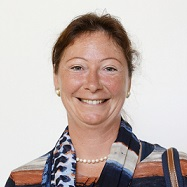Women's Special Issue Series: Land System Science
A special issue of Land (ISSN 2073-445X).
Deadline for manuscript submissions: closed (8 March 2024) | Viewed by 12782
Special Issue Editors
Interests: landscape ecology; conservation planning; biodiversity research; ecological impacts of climate change
Interests: social–ecological system models; ecosystem services; impact assessment; participatory planning processes at urban and landscape scales; climate change adaptation and mitigation strategies; biodiversity trends and governance
Special Issues, Collections and Topics in MDPI journals
Interests: landscape ecology; ecosystem conservation; adaptive management
Special Issues, Collections and Topics in MDPI journals
Interests: biodiversity conservation; ecosystem services; landscape restoration; landscape fragmentation and climate-smart agriculture; SDGs
Interests: hydro-ecology based approaches and watershed management; hydrologic risk assessment; forest hydrology; ecosystem services; human-water systems; urban resilience through blue-green infrastructure; greenhouse gas inventory country reports and national communications
Special Issue Information
Dear Colleagues,
Land System Science is an emerging discipline that widens the view of other fields, such as landscape ecology, by the consequent integration of the interactions of humans and nature in its hypotheses, research questions, approaches, and its inter- and transdisciplinary methods. A key person in this context was Elinor Ostrom, who formulated the concept of social–ecological systems. Ostrom [1,2], through her concept, posited preliminary scientific works answering the following question: how can we develop an integrative and interdisciplinary approach to understanding the complex systemic interactions and systemic scales in the context of natural resource management?
Such systems, however, in order to be societally relevant and politically influential, require integrated assessment approaches, such as those suggested in the 1990s by Gretchen Daily in her famous works on the dependence of human well-being on natural ecosystem services (“Ecosystem Services”; [3,4]). Daily's excellent contribution to the field consists of delivering economic arguments surrounding how the sustainable management of ecosystems can be improved.
Meanwhile, such basic systems research has become more integrated, defined by the approaches of inter- and transdisciplinary research, citizen science, and the understanding that land system research is a co-designed process between scientists on the one side and society on the other.
The call of Melissa Leach [5,6] for pathways of humanity which considers a safe operational space that accounts for ecological (planetary) boundaries and human demands started as a call for integrating a deep systemic understanding of human–nature interactions and the communication surrounding policy making. Leach asked how this integration could be transformed into sustainable development strategies.
Presently, highly integrative research and studies addressing key societal challenges—such as the achievement of the UN Sustainable Development Goals, the objectives of the Paris Agreement, the recommendations of CBD, the trade-offs for economic development under the shock of global pandemics, and the increasing resource competition across geopolitical contexts—are driving the research questions and approaches in land system science [7]. For instance, climatic extremes, human–nature interactions, and biodiversity losses through large-scale hazards, such as mega-fires, are gaining scientific attention [8,9] The threats to “nature´s contribution to people” are specified and characterized for different biomes, such as mountain ecosystems, which are acknowledged to be the most valuable and the most vulnerable systems under climate change and human pressures for land use [10] Large-scale research, such as the question of corridors and their efficiency and suitability for conserving moving animals under climate change and habitat vulnerability assessments, have been gaining importance [11,12]. Additionally, certain movements, for example, that calling for better recognition of local and indigenous knowledge, beyond scientific knowledge, have become more central, as suggested by Kamaljt Sangha; such recognition will foster the integration of people´s experiences, perceptions, and values into land system research [13,14].
All the above-mentioned developments were published through women in land system science, who have contributed enormously to shaping the advances in our scientific area; furthermore, women are continuing to develop this emerging discipline, with research reflecting the rising challenges surrounding the sustainable development of our planet.
With this Special Issue, we wish to call women in land system sciences (and in disciplines closely related to the field) to contribute their research advances, recent results, and emerging visions and approaches to the LAND journal. Acknowledging that scientific progress is a joint and inclusive effort—which requires gender equity and equity in access to publishing across the global north and south—we invite female researchers from all over the world to contribute to this Special Issue, and, with us, co-develop an award for “Influential female research in Land System Science”. We call experienced female scientists as well as young female scholars to contribute to bringing our research forward.
Full research papers are welcome, as well as short communications, reviews, discussions, and perspective papers. The only precondition is that the lead author—and ideally last author—are female researchers. Research areas may include—but are not limited—to the following aspects:
- Land system science in the 21 century—challenges and innovative approaches;
- Global change—drivers and pressures on land systems;
- Social–ecological systems—frameworks, approaches, and models for achieving the UN SDGs;
- “Measuring sustainability”—ecosystem services/nature´s contribution to people: what can we achieve in integrating ecology’s constraints in policy and decision making?
- Global biodiversity losses—contributions of land system sciences to halt losses and restore nature;
- Climate change impacts on land systems—adaptation and mitigation approaches and their successes;
- Global resource competition—geopolitical processes and their impacts on nature, societies, and sustainable development;
- Critical global processes—climate change, urbanization, and demographic development, and their joint impacts on nature and society
We welcome submissions from all authors, irrespective of gender.
References:
- Ostrom, E. A general framework for analyzing sustainability of social-ecological systems. Science 2009, 325(5939), pp. 419–422.
- McGinnis, M. D.; Ostrom, E. Social-ecological system framework: initial changes and continuing challenges. Ecol. Soc. 2014, 19(2). Available Online: https://www.jstor.org/stable/26269580 (Accessed on 12 February 2023).
- Daily, G. C. Introduction: What Are Ecosystem Services. In Nature’s Services: Societal Dependence on Natural Ecosystems. 1997, 1(1). Available Online: https://www.raincoast.org/library/wp-content/uploads/2012/07/Daily_1997_Natures-services-chapter-1.pdf (Accessed on 12 February 2023).
- Daily, G.. What are ecosystem services. In Global Environmental Challenges for the Twenty-First Century: Resources, Consumption and Sustainable Solutions. D. E. Lorey, Eds.; Scholarly Resources Inc: Wilmington, DE, USA, 2003; pp. 227–231.
- Leach, M.; Rockström, J.; Raskin, P.; Scoones, I.; Stirling, A. C.; Smith, A.; Thompson, J.; Millstone, E.; Ely, A.; Around, E. et al. Transforming innovation for sustainability. Ecol. Soc. 2012, 17(2). Available Online: https://www.jstor.org/stable/26269052 (Accessed on 12 February 2023).
- Leach, M., Raworth, K., & Rockström, J. Between social and planetary boundaries: Navigating pathways in the safe and just space for humanity. In World Social Science Report 2013. UNESCO. 2013. Available Online: https://unesdoc.unesco.org/ark:/48223/pf0000246073 (Accessed on 12 February 2023).
- Fürst, C. Upcoming Challenges in Land Use Science—An International Perspective. In Sustainable Land Management in a European Context. Moran, E.F.; Springer: Basel, Switzerland, 2021, Volume 8, pp. 319–336.
- Armenteras, D.; Dávalos, L. M.; Barreto, J. S.; Miranda, A.; Hernández-Moreno, A.; Zamorano-Elgueta, C.; González-Delgado, T.M.; Meza-Elizalde, M.C.; Retana, J. . Fire-induced loss of the world’s most biodiverse forests in Latin America. Sci. Adv. 2021a, 7 (33), eabd3357.
- Armenteras, D.; Meza, M. C.; González, T. M.; Oliveras, I., Balch, J. K.; Retana, J. Fire threatens the diversity and structure of tropical gallery forests. Ecosphere 2021, 12 (1), e03347.
- Martín-López, B.; Leister, I.; Lorenzo Cruz, P., Palomo, I.; Grêt-Regamey, A.; Harrison, P. A.; Lavorel, S.; Locatelli, B.; Luque, S.; Walz, A. Nature’s contributions to people in mountains: a review. PloS One 2019, 14 (6), e0217847.
- Malakoutikhah, S.; Fakheran, S.; Hemami, M. R., Tarkesh, M.; Senn, J. Assessing future distribution, suitability of corridors and efficiency of protected areas to conserve vulnerable ungulates under climate change. Divers. Distrib. 2020, 26 (10), 1383–1396.
- Nematollahi, S.; Fakheran, S.; Kienast, F.; Jafari, A. Application of InVEST habitat quality module in spatially vulnerability assessment of natural habitats (case study: Chaharmahal and Bakhtiari province, Iran). Environ. Monit. Assess. 2020, 192 (8), 1–17.
- Sangha, K. K.; Preece, L.; Villarreal-Rosas, J.; Kegamba, J. J.; Paudyal, K.; Warmenhoven, T.; RamaKrishnan, P. S. An ecosystem services framework to evaluate Indigenous and local peoples’ connections with nature. Ecosyst. Serv. 2018, 31, 111–125.
- Sangha, K. K.; Maynard, S.; Pearson, J.; Dobriyal, P.; Badola, R.; Hussain, S. A. Recognising the role of local and indigenous communities in managing natural resources for the greater public benefit: Case studies from Asia and Oceania region. Ecosyst. Serv. 2019, 39, 100991.
Prof. Dr. Christine Fürst
Prof. Dr. Sima Fakheran
Dr. Li Li
Dr. Jin Kyoung Noh
Dr. Pinar Pamukcu Albers
Guest Editors
Women’s Special Issue Series
This Special Issue is part of Land's Women’s Special Issue Series, hosted by women editors for women researchers. The Series advocates the advancement of women in science. We invite contributions to the Special Issue whose lead authors identify as women. The submission of articles with all-women authorship is especially encouraged. However, we do welcome articles from all authors, irrespective of gender.
Manuscript Submission Information
Manuscripts should be submitted online at www.mdpi.com by registering and logging in to this website. Once you are registered, click here to go to the submission form. Manuscripts can be submitted until the deadline. All submissions that pass pre-check are peer-reviewed. Accepted papers will be published continuously in the journal (as soon as accepted) and will be listed together on the special issue website. Research articles, review articles as well as short communications are invited. For planned papers, a title and short abstract (about 100 words) can be sent to the Editorial Office for announcement on this website.
Submitted manuscripts should not have been published previously, nor be under consideration for publication elsewhere (except conference proceedings papers). All manuscripts are thoroughly refereed through a single-blind peer-review process. A guide for authors and other relevant information for submission of manuscripts is available on the Instructions for Authors page. Land is an international peer-reviewed open access monthly journal published by MDPI.
Please visit the Instructions for Authors page before submitting a manuscript. The Article Processing Charge (APC) for publication in this open access journal is 2600 CHF (Swiss Francs). Submitted papers should be well formatted and use good English. Authors may use MDPI's English editing service prior to publication or during author revisions.
Keywords
- land system science
- climate change
- demographic development
- ecosystem services
- human–nature interactions
- nature's contribution to people
- natural resource management
- social–ecological systems
- UN Sustainable Development Goals
- urbanization







